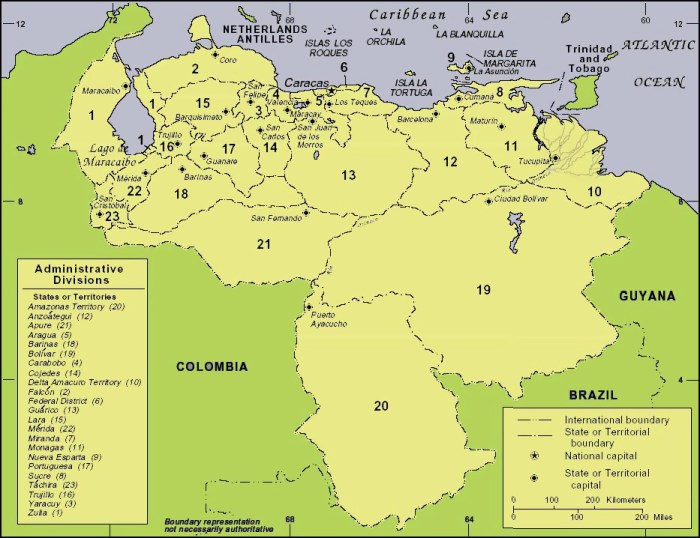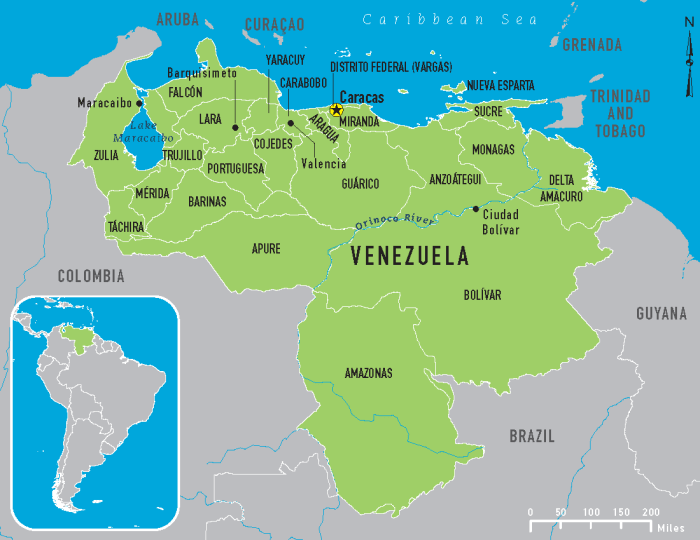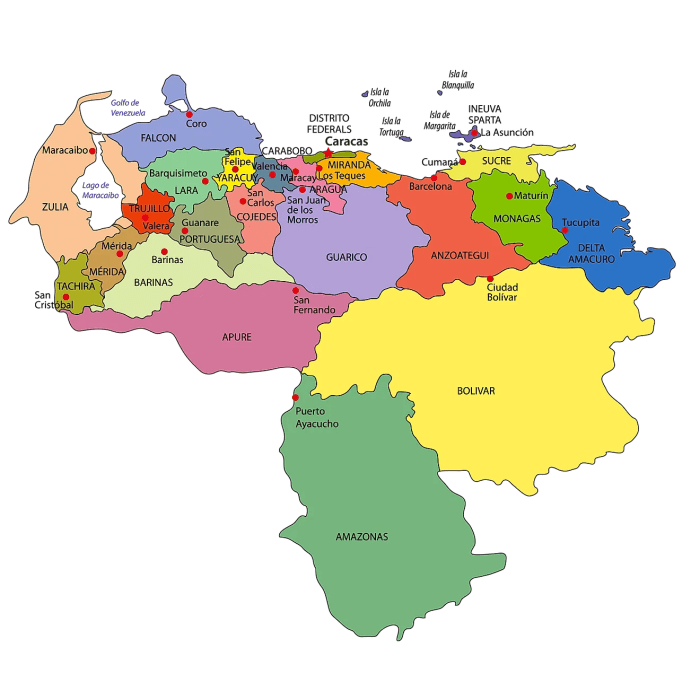Label the map of venezuela according to panorama – Labeling the map of Venezuela according to panorama sets the stage for this enthralling narrative, offering readers a glimpse into a story that is rich in detail and brimming with originality from the outset. With its captivating geographical features, vibrant cities, and rich cultural heritage, Venezuela beckons us to explore its diverse landscapes and uncover the stories that have shaped this enigmatic nation.
Embarking on this cartographic adventure, we will traverse the towering Andes Mountains, navigate the mighty Orinoco River, and marvel at the shimmering expanse of Lake Maracaibo. We will uncover the historical significance of Venezuela’s administrative divisions and delve into the economic activities that drive its vibrant economy.
Along the way, we will encounter iconic cultural landmarks, such as Angel Falls and the colonial city of Coro, which stand as testaments to Venezuela’s enduring spirit.
Introduction: Label The Map Of Venezuela According To Panorama

Venezuela, located in northern South America, holds a significant position in the region. With its diverse geography, rich natural resources, and unique cultural heritage, labeling a map of Venezuela using a panorama provides a comprehensive understanding of the country’s key features and landmarks.
Identifying Key Features

Venezuela’s topography is marked by the imposing Andes Mountains in the west, the vast Orinoco River in the central plains, and the picturesque Lake Maracaibo in the northwest. These features have shaped the country’s landscape, influencing its climate, biodiversity, and economic development.
Urban Centers and Infrastructure
- Caracas: The capital and largest city, a vibrant hub for commerce, culture, and politics.
- Maracaibo: A major port city on the shores of Lake Maracaibo, known for its oil industry.
- Valencia: An industrial center located in central Venezuela, renowned for its automotive and manufacturing sectors.
Venezuela’s transportation infrastructure connects these cities through a network of roads, railways, and airports, facilitating economic activities and travel.
Political and Administrative Divisions
Venezuela is divided into 23 states, each with its own governor and legislative assembly. The states are further subdivided into municipalities and parishes, creating a complex administrative system with historical and political significance.
Natural Resources and Economic Activities
Venezuela is endowed with abundant natural resources, including oil, gas, and minerals. The oil industry plays a dominant role in the country’s economy, contributing significantly to its GDP and government revenue.
Cultural and Historical Landmarks, Label the map of venezuela according to panorama
- Angel Falls: The world’s highest waterfall, a breathtaking natural wonder located in Canaima National Park.
- Coro: A colonial city founded in 1527, recognized by UNESCO as a World Heritage Site for its well-preserved architecture.
- Gran Sabana: A vast savanna region in southeastern Venezuela, home to unique rock formations and biodiversity.
These landmarks showcase Venezuela’s rich cultural heritage and historical significance, attracting tourists and preserving the country’s identity.
Frequently Asked Questions
What is the significance of labeling a map of Venezuela?
Labeling a map of Venezuela provides a visual representation of the country’s geographical features, cities, and administrative divisions. It enhances our understanding of Venezuela’s diverse landscapes, infrastructure, and political organization.
What are the key physical features of Venezuela?
Venezuela boasts a diverse range of physical features, including the Andes Mountains, the Orinoco River, and Lake Maracaibo. These features play a crucial role in shaping the country’s climate, vegetation, and natural resources.
What are the major cities of Venezuela?
Caracas, Maracaibo, and Valencia are the major cities of Venezuela. They serve as economic, cultural, and political hubs, contributing significantly to the country’s development.
